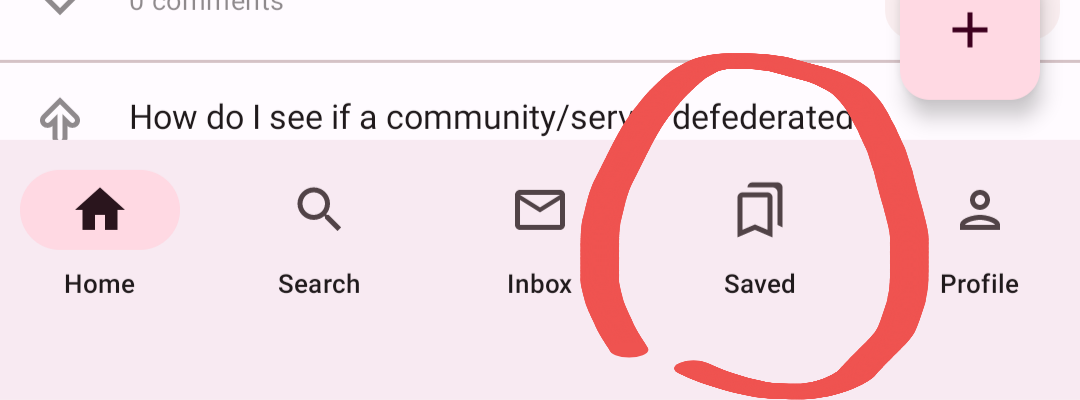As far as motorcycles go, I’ve heard “loud pipes save lives”, in that people will hear the motorcycle and be aware of it when they otherwise would not.
megahertz
- 1 Post
- 18 Comments

 2·1 year ago
2·1 year agoOh, yeah! I love those tracks too.
Those lines in wrong way/one way: I touch the ground/send my roots deep down/try to stick around.
And these from big lie: Everything’s changing / there’s beauty between the lies
I’m massively indebted to the friend who introduced me to RVIVR. I think I love all of their music.
I once was able to participate in a live stream thing Erica did on Instagram; she asked for requests, and then played mine! I was on cloud nine for months after and still get giddy thinking about it. To be fair, I think she played all the requests, but still…

 2·1 year ago
2·1 year agoPretty much any RVIVR song, imo. I was going to include the best set of lyrics, but I can’t decide.
I’m partial to “goodbyes”, “cut the cord”, and “shaggy” from a lyrics+music standpoint, but find it difficult to separate the best lyrics without the music.
Ah, well, as they say, “we’re all adults here, we can choose”

 1·1 year ago
1·1 year agoI see I was looking at the conversation from a wider perspective and likely misunderstood the context added by the image. I don’t disagree with your comment “abolishing ‘x’ ends ‘x’”. However, abolishing any given inequity, one at a time, in one area at a time is not the progress I was speaking of when I asked how to change social structure. Before we can abolish anything, we need people who believe it should be abolished, and we need enough of them to institute change. My question was directed more toward the earlier steps: identifying necessary change and then creating/maintaining a movement which can enact that change.

 2·1 year ago
2·1 year agoYeah, the context button doesn’t seem to add the context that I find helpful. I agree it should show your comment and replies to your comment (and parent comment, if applicable? Although I think that should show as a collapsed portion that you can expand as desired).

 11·1 year ago
11·1 year agoIf we keep finding ourselves in another iteration of the problem, did it really work? There has to be a more permanent solution.

 4·1 year ago
4·1 year agoWhen I click the chain icon, it brings me to the post and I can see the reply comment, but not my own (which for me adds a lot of needed context for interpreting the reply). Is this normal?

 1·1 year ago
1·1 year agoWhile I feel like I might understand some of the impulse to restrict resources as a way to ensure all members contribute to society, we can see that this isn’t actually the outcome of such restrictions; this tells me that the motivation isn’t about improving society but rather improving the standing of a select few. It is all about power and control. How do we change the social structure at this point?

 7·1 year ago
7·1 year agoThe concept of suitable housing as a right is too uncommon. I wish the US government would put more focus on tangible needs like housing, access to healthy food, and healthcare.

 1·1 year ago
1·1 year agoCould you link to the post? I was only able to find another post with a similar (but different, imo) question, which was also removed as a duplicate. I’d like to read the answers, if possible

 2·1 year ago
2·1 year agoI’m guessing it is in settings? Also a jerboa user. But I am seeing the comment images at a reasonable size. I’m using the dark theme, and I think I changed the font size, but it’s been almost a month since I first installed, so not super sure.

 1·1 year ago
1·1 year agoThanks, I’ll give that a try.

 1·1 year ago
1·1 year agoYeah, I posted a link to a song and asked if anyone else liked it, but the post was removed as off-topic. So I guess that was a stupid question.

 1·1 year ago
1·1 year agoI couldn’t remember the word for bookmark! Thank you! I tried to compensate by over describing, lol

 0·1 year ago
0·1 year agoThere is a flag/banner (ribbon?) icon below posts (and comments), if you click the icon, the post (or comment) will be visible in your in-app saved items (bottom toolbar, looks similar to the save icon). I’ll post screenshots.
Here’s the icon to save a post/comment:

Here’s the bottom ribbon icon to view saved items:

The screenshots make this post confusing for me, lol! Every time I edit I get confused about where to click! Sorry for the poor cropping of the images.
Yes! I agree. Making music/drum beats incorporates so many different body systems, it can definitely improve proprioception.
Look into proprioception; simply put, if you’re unfamiliar, proprioception is essentially the ability to perceive the boundaries of your body/where you are in space and/or in relation to things like furniture, that uneven section of the sidewalk, door frames, other people, etc. Some people have lower proprioception.
Low proprioception can also result in reduced perception of physical stimulation; this might look like someone who:
-
throws themselves onto the couch,
-
hugs too hard,
-
regularly gives a painfully strong handshake,
-
often talks too loud,
-
drops things frequently, etc.
It’s already been mentioned that folks on the ADHD and/or autism spectrum are more likely to have low proprioception, so if you see yourself (or as you were as a child, since many descriptions are centered around ways this would present in children) in some descriptions of common experiences of those with low proprioception and also diagnosed with ADHD and/or autism, you may find value in pursuing assessment yourself (this was the case for me, diagnosed at 38). Or you may not.
Either way (associated with a medical diagnosis or not), proprioception can be improved if there is interest in doing so. For example, movements that cross the body are helpful in increasing awareness of where your body is in space, which can increase awareness of where other things are in space as well. For me this led to not only the anticipated outcome of fewer run-ins with tables, doorframes, etc, but also reduced frequency for things like dropping my keys, knocking over drinks, all forms of spilling on myself, and tripping over stuff.
-
Megalodong